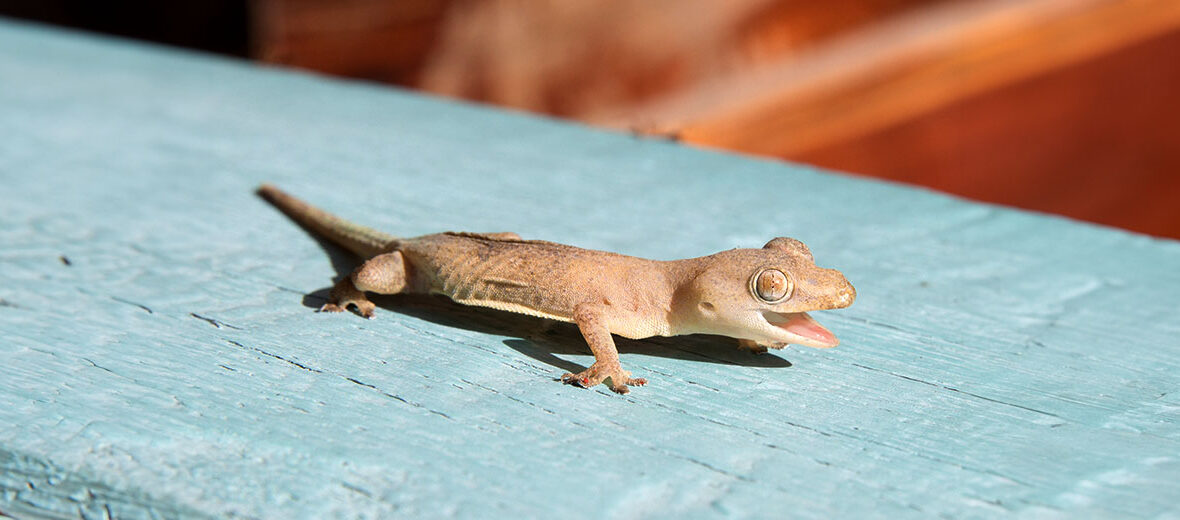
The common house gecko, aka Asian house gecko, chipkali, house lizard, moon lizard, Pacific house gecko, tiktiki, or wall gecko, is originally from southern and southeastern Asia. However, they have been intentionally and accidentally introduced to the southern United States, the Caribbean, Central America, South America, Australia, and the Middle East, to name a few places. Due to their broad range, prolific numbers, and the potential for being invasive, these geckos are listed as Least Concern by the IUCN.
First the Stats…
Scientific name: Hemidactylus frenatus
Weight: Up to 2.5 ounces
Length: Up to 5.9 inches
Lifespan: Up to 7 years
Now on to the Facts!
1.) Like most other geckos, they are nocturnal (active at night).
2.) They tend to be seen scaling the walls of buildings and houses in search of positively phototactic insects (insects attracted to lights).
3.) Being highly adaptable, these geckos tend to displace other smaller and less aggressive gecko and lizard species.
4.) Just like other gecko species, these critters are capable of caudal autonomy (they can drop their tail when pursued by a perceived threat).
5.) Cockroaches, termites, some bee species, wasps, butterflies, moths, flies, spiders, mollusks, and several beetle species are all preyed on. They also prey on smaller gecko species. Cannibalism has been documented in captivity but not observed in the wild.
But wait, there’s more on the common house gecko!
6.) Evidence suggests that the common house gecko has and is negatively impacting the local gecko populations in Central America, tropical Asia, and the Pacific. This is due to parasites, diseases, predation, and general out-competition for food.
7.) These geckos are best described as quinodiurnal. This means they thermoregulate (warm their body temperature) during the day and forage for food at night.
Did you know…?
These, like many other gecko species, have the ability to produce sound. These critters produce a distinct chirping sound. Their call sounds like “gecko, gecko”, also described as “tchak tchak tchak”, repeated up to 9 times in a row.
8.) Due to their call, they are also nicknamed chee chak, chi chak, butiki, and multiple other names.
9.) They are also called limpia casas (Spanish for “house cleaners”) due to their ability to help clean homes of various insects and other arthropods.
10.) The females of this species are considered monoautochronic ovulatory. This means that they produce a single egg per ovary per cycle.
But wait, there’s still more on the common house gecko!
11.) Females lay 2 hard-shelled eggs 2 – 3 times per year. The eggs hatch in up to 68 days.
12.) In Thailand, if a common house gecko chirps when someone leaves the house, that is considered a bad omen. In Thai idioms, they are referred to as a ทักทายตุ๊กแก – Thạkthāy túkkæ “greeting gecko”.
13.) There is an art of divination based on a gecko falling onto a person’s body, with the different body parts defining different predictions. This art of divination can be observed throughout India.
14.) Snakes, larger lizards, birds, larger spiders, cats, dogs, and larger praying mantises all prey on these geckos.
Now a Short Common House Gecko Video!
Be sure to share & comment below! Also, check out the Critter Science YouTube channel. Videos added regularly!
Want to suggest a critter for me to write about? Let me know here.
Some source material acquired from: Wikipedia & IUCN
Photo credit: Basile Morin




